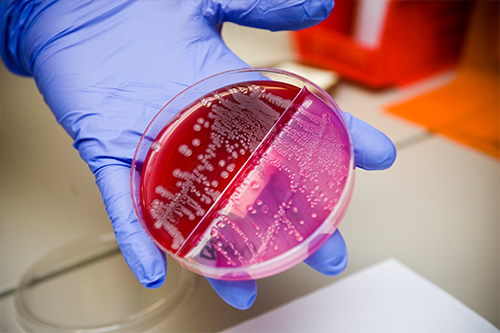
Occasionally, food contamination with dangerous bacteria prompts our Department of Public Health to make a recall notice to keep Canadians safe. The recent recall of lettuce products due to E. coli contamination fortunately had no deaths and only a few confirmed cases in Canada, but it has left many Canadians asking questions about E. coli and food safety.
What is E. Coli?
E. Coli is the name of a type of bacteria – Escherichia coli. Some varieties of this bacteria are naturally occurring and everyone has a little bit of them in their own digestive system at all times. However, specific varieties have the ability to cause mild to severe food poisoning, making someone who ingests them sick.
How Does E. Coli Get into Our Food?
Dangerous types of E. coli are usually ingested when people eat food that has been contaminated. Often this happens when our food or water comes into contact with animal or human feces. This contamination can happen at virtually any point in growing or processing, so it is often difficult to pin down where contamination happened.
Proper hand hygiene and food preparation is our greatest defence against E. coli food poisoning as it can make our food safe just before we eat it, defending against contamination from all steps of food processing.
What Does E. Coli Food Poisoning Look Like?
Depending on the severity, people can experience a wide array of digestive symptoms from E. coli poisoning. These may include:
- Nausea and possible vomiting
- Severe abdominal cramping
- Diarrhea and possible bloody stools
- Headache
- Fever
These symptoms can last from 5-10 days. While they might be an uncomfortable inconvenience for some, others may develop more severe and life-threatening health issues. About 5-10 percent of E. coli food poisoning cases may involve hemolytic uremic syndrome (HUS), causing the breakdown of red blood cells and kidneys. The very young and very old are more often affected by this.
There is no way to directly treat food poisoning of this nature, though those that need to seek medical attention may need help with maintaining hydration or even dialysis to treat complications like kidney failure.

How to Stay Safe
- E. coli can make its way into our foods from a variety of sources and in a wide array of different foods. While we have strict regulations on the handling and processing of food that minimize the risk, accidents like the recent lettuce exposure to potential E. coli can still happen. You can keep yourself and your family safer by making sure that you take your own precautions to minimize risk:
- Practice good hand hygiene and always wash your hands
- Wash produce before eating
- Avoid cross-contamination by using clean cooking utensils and serving dishes
- Do not defrost meat on the counter, but use a fridge or microwave instead
- Immediately refrigerate leftovers
- Avoid unpasteurized products
- Ensure meat is cooked properly (chicken to a temperature of 165°F, ground meat and eggs to 160°F, and all steaks, roasts, pork chops, fish etc to 145°F)
The Romaine Lettuce food warning has been lifted in Canada as of December 24, 2018 and in the United States as of January 9, 2019.
Food poisoning is unpleasant for anyone, but poisoning from contact with E. coli bacteria can be dangerous or potentially fatal. Although we can be proud of the incredible food safety standards that our country offers today, taking our safety into our own hands is just as important as it ever was.